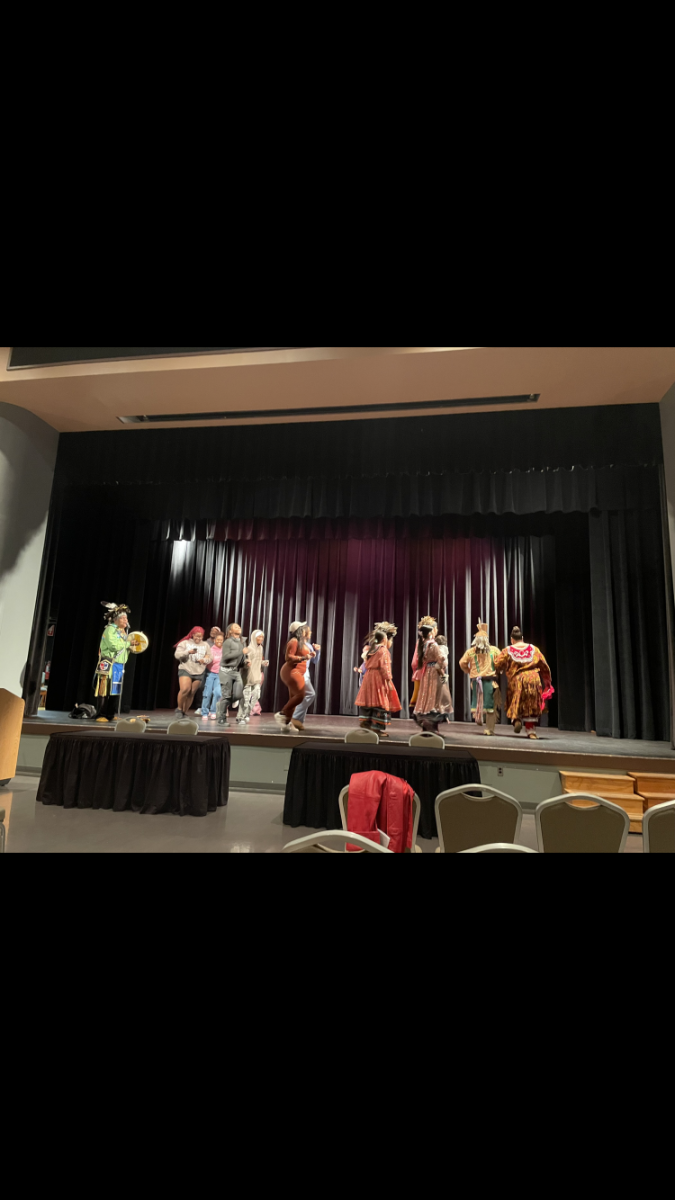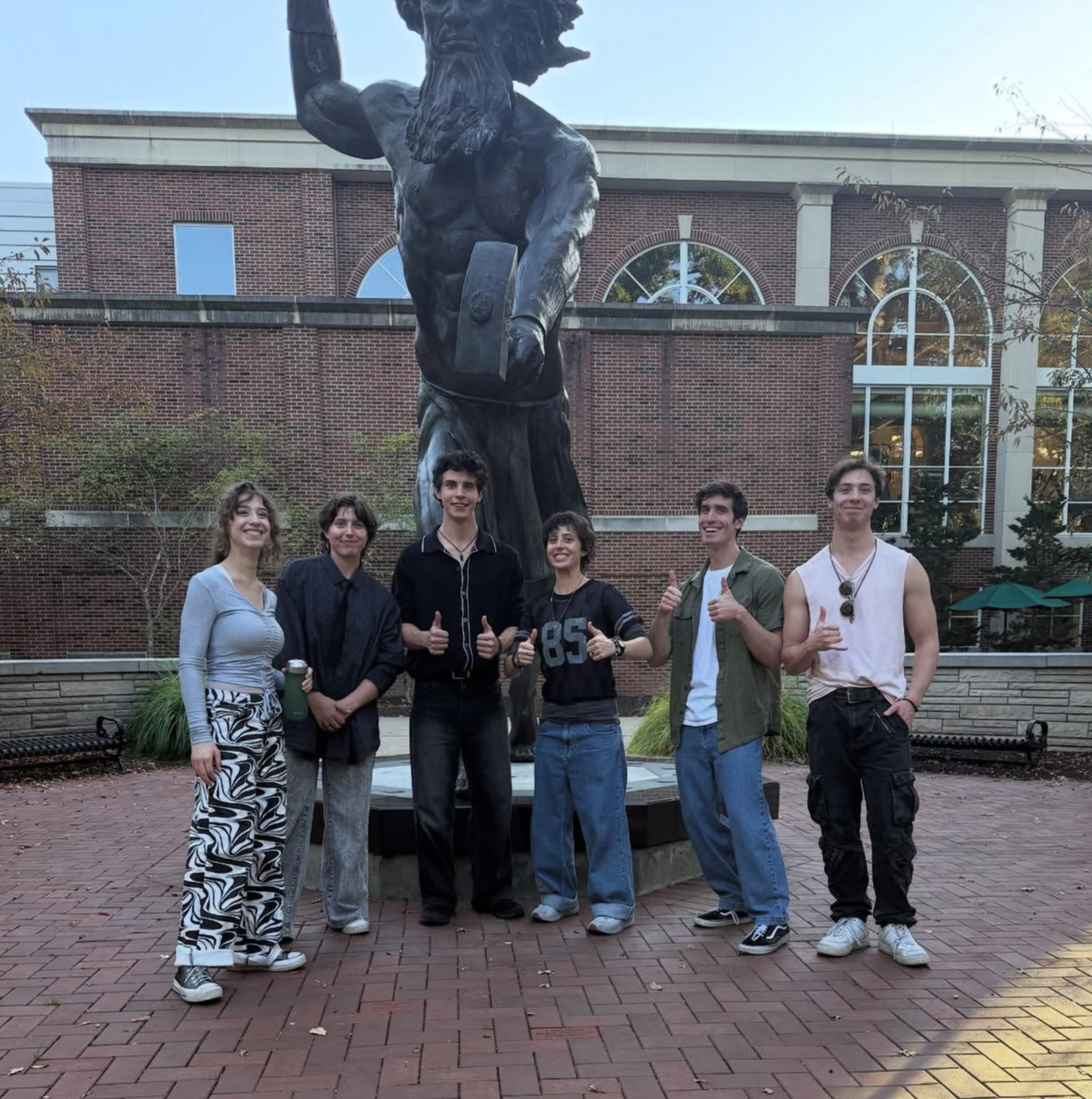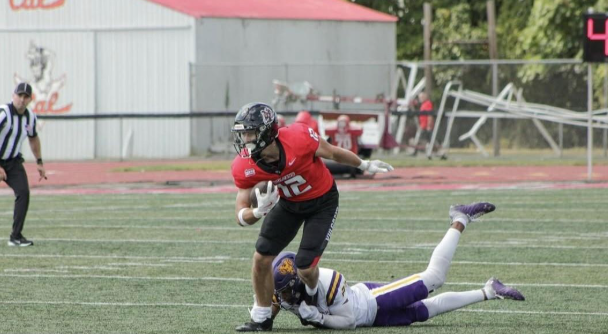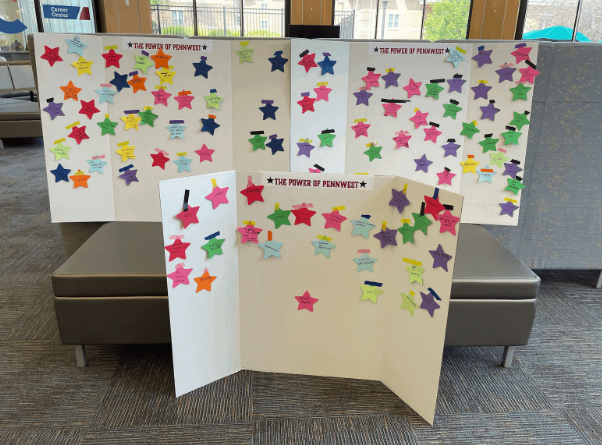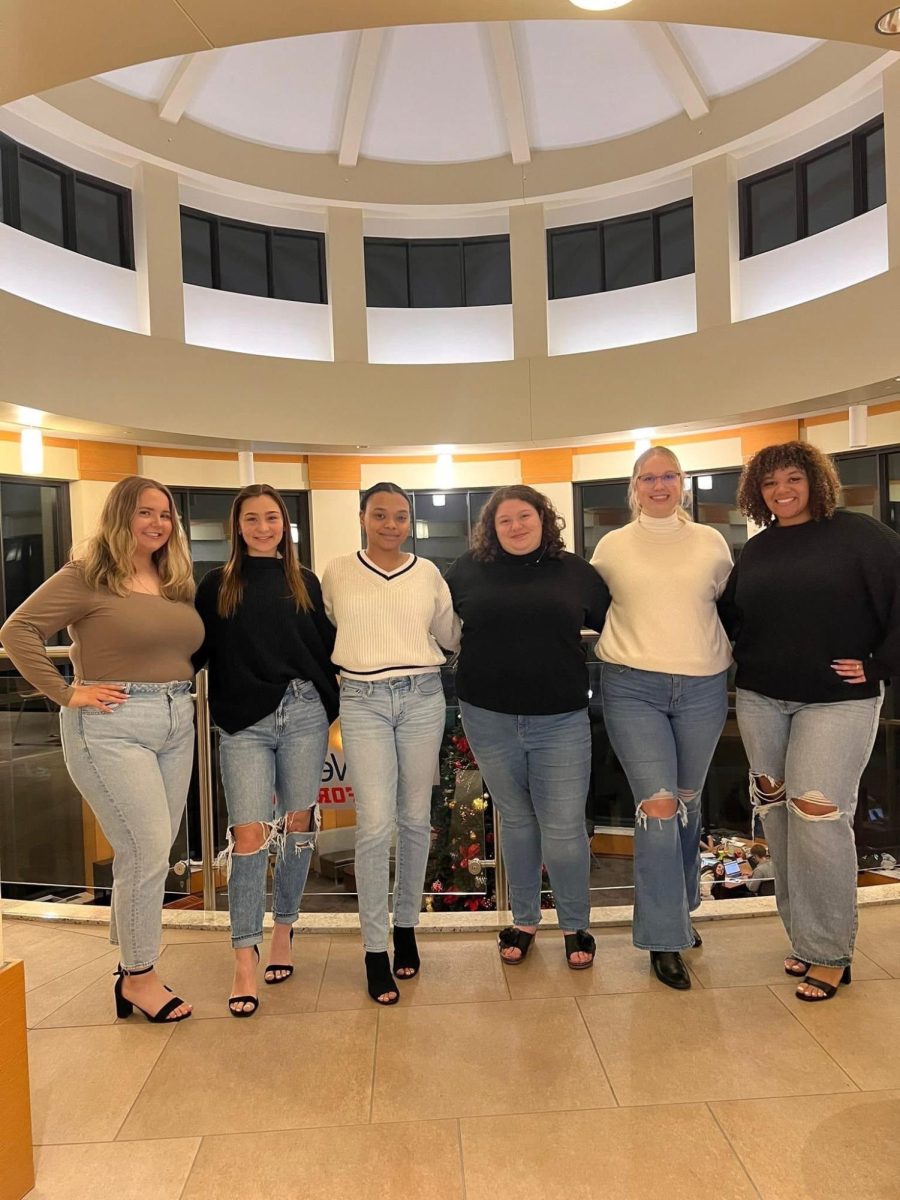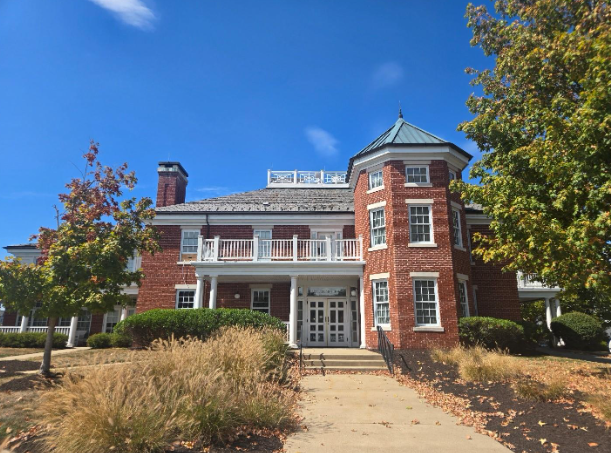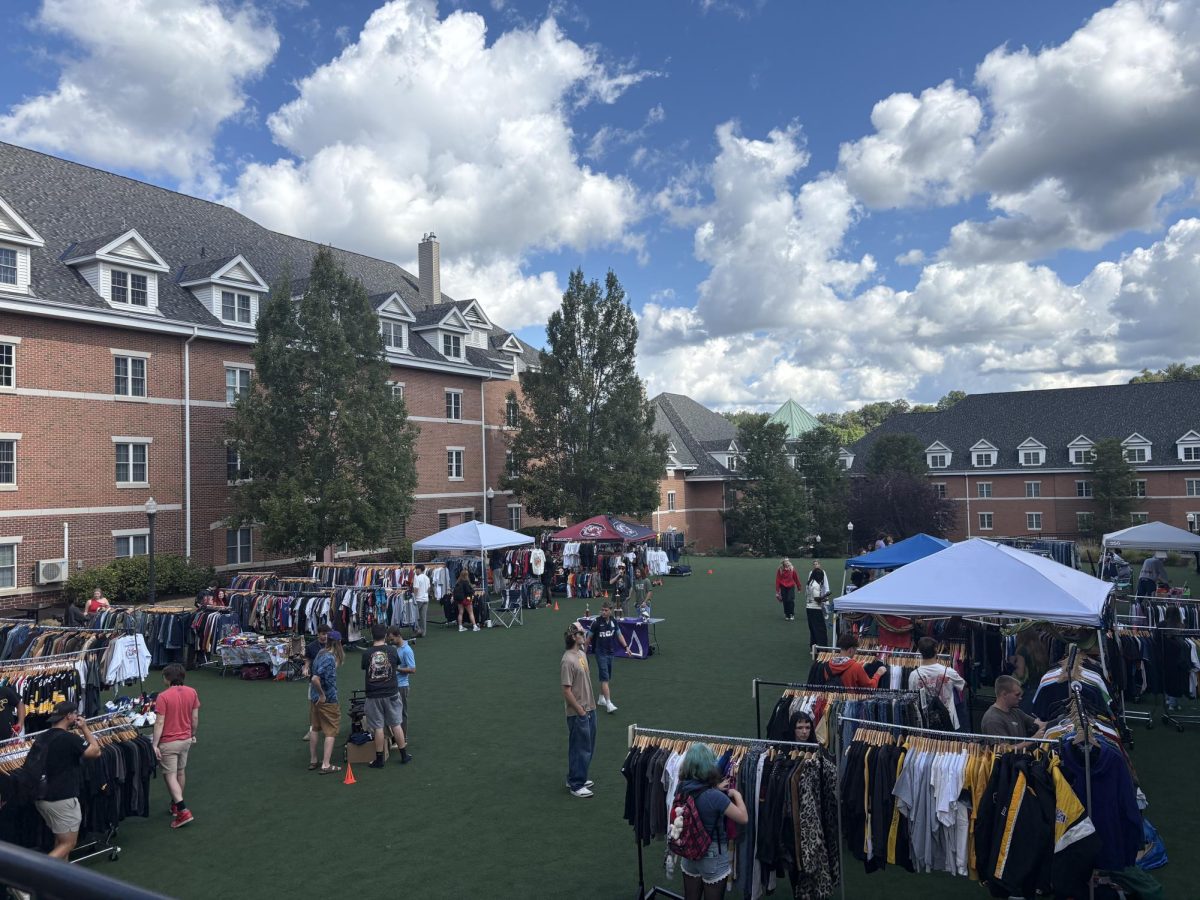Members of the Allegany River Seneca Dancers visited PennWest California this past Monday as their last stop of the three campuses as part of the Diversity, Equity, and Inclusion Office’s mission to provide awareness of Native American Heritage Month.
They traveled four hours from their reservation to share the ceremonial songs and dances of the Iroquois around 6 p.m. in the Natali Performance Center.
Bill Crouse, the event’s main speaker, explained that their reservation is located on a 40-mile stretch of land surrounding the Allegheny River within New York State boundaries.
Wearing traditional regalia, Crouse was joined by other group members and began recounting Seneca history.
These social songs and dances shown to the crowd give thanks and tell the history of their culture and are translated to mean, “dances or songs of the Earth,” according to Crouse.
In Seneca culture, gathering for big ceremonies aligning with the agricultural cycle and during their New Year is common.
“We have a ceremony when it’s time to plant,” Crouse said. “We have a big ceremony when the wild strawberries are ripe, and we also have a five-day ceremony when the white corn is in its milk stage.”
They hold these ceremonies in the longhouse, which Crouse described as a meeting place about 70 feet long and 30 feet wide containing a hardwood floor and some benches, giving them a lot of space for dancing.
These songs and dances have been passed down as part of their oral tradition, and they have “the awesome duty” of then teaching these things to their children along with the story that goes along with them, according to Crouse.
“There’s a lot more history than you can read in a book,” Crouse said before they began the first dance.
Crouse then continued on with announcing the dances as they would be announced back in the longhouse, in the Seneca language.
After showing the crowd multiple songs and dances, including the Women’s dance, the Seneca War dance, and the Fish dance, Crouse invited the crowd up to the stage to partake in the Friendship dance with them.
Eager PennWest students and faculty raced to the stage to partake in the Friendship Dance, as well as a couple of others, including the Round Dance, the Alligator Dance, the Dance of the North, and the Stick Dance.
Alena Clark, assistant director of the Office of DEI on the Clarion campus, participated in these dances.
“We really wanted to honor and highlight the tribes that used to be here and are still here,” Clark said regarding the planning of the visit. “Hopefully this inspires people to reach out and learn more to help preserve the culture and the language [of the tribes].”
Crouse and the other members closed out the performance by showing the crowd individual talents like his 11-year-old grandson’s Hoop dance and various members’ contest-style Smoke dances.
Using ten different hoops, Liam encouraged crowd whoops and applause by forming different shapes with the hoops as well as jumping through them, which according to Crouse is a type of healing dance.
“As healers, our people understood that all along we used to be able to heal a person’s mind, body, and spirit, so that’s what the healing power of this dance is,” Crouse said.
After the performance, PennWest history major Ariel Schurg made some connections with their Native American History courses in their time here at PennWest.
“It was cool to take what I read on pages and watch it occur in real life,” Schurg said.
PennWest student Wyatt Yates also thought it was captivating as a music education major.
“It was interesting to see music from different cultures that isn’t just a recording in a classroom,” Yates said. “Seeing it in real time was fascinating.”

